北海道大学北方生物圏フィールド科学センター水圏ステーション
洞爺臨湖実験所
TOYA LAKE STATION
122,Tukiura,Toyako town, Abuta-gun,Hokkaido,049-5723,Japan
TEL.FAX:0142-75-2651
Toya Lake Station
An outline of Toya Lake Station
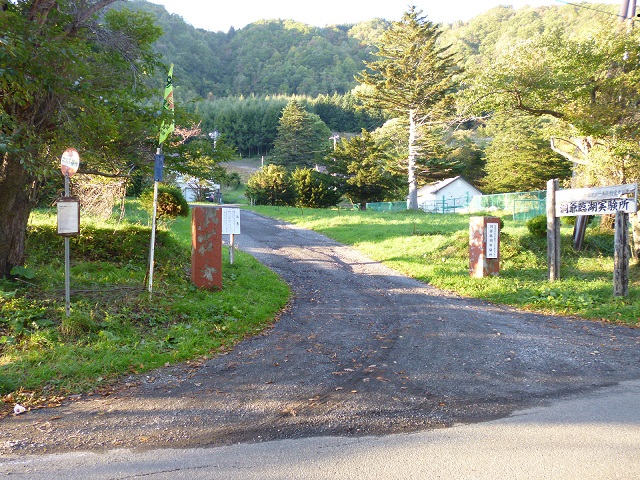
Toya lake Station is the only limnological station in Field Science Center for Northern Biosphere, Hokkaido University. It was originally donated by Toya Lake Fisherman’s Association to Hakodate Higher Fisheries College, the predecessor of the present Faculty of Fishery Science, Hokkaido University, as a lacustrine sockeye salmon hatchery in 1936. Now, the Toya Lake Station belongs to Field Science Center for Northern Biosphere, Hokkaido University as a common-utilized facility. The station provides visiting students and researchers with an educational and research site in a field of freshwater. There are a research building, a guesthouse, a hatchery facility, sixteen round FRP aquariums, and three round fishponds on the site of about one hectare in Toya Lake Station. There is also a boathouse on the lakeshore. We have two motorboats in the boathouse. The one is used to catch fishes with gillnets; the other boat is used for environmental and biological monitoring.
The research building has a student’s practical laboratory, two experimental laboratories, a researcher’s office, a clerk’s office, and a seminar room.
The guesthouse has two bedrooms, (each of which has four beds), a living room, a kitchen, a bathroom and a toilet. In the case of the stuff and the student in Hokkaido University, there is no charge for an overnight stay. An external visitor also can stay in the guesthouse at a charge of 580-660 yen for one night. In addition, a laundry charge has to be paid in either case (594 yen per one week).
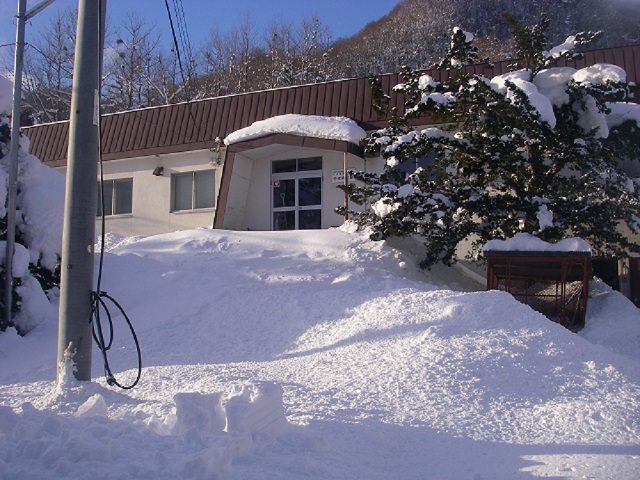
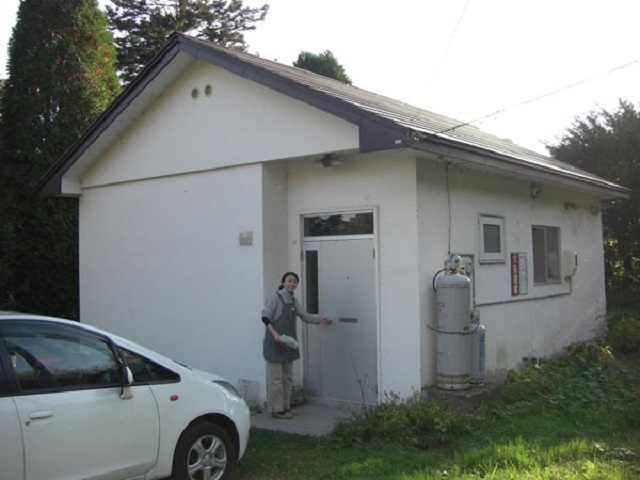
A fish farm
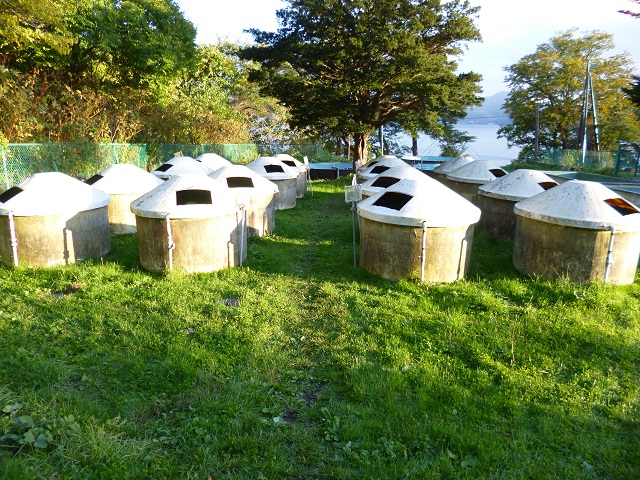
The hatchery facility has six long rearing tanks, which can be divided into several partitions with plates. At least about 20,000 eggs of lacustrine sockeye salmon can be reared on several-tiered racks in the tank. After hatching, spawn are raised into fingerlings with a length of about 6 cm and transferred into an outside aquarium; otherwise, they are released into Lake Toya through a fishway (an artificial river) in spring after a fin (either an adipose fin or a ventral fin) is cut off them.
The round FRP aquarium has a diameter of 1.6 m and a depth of 1 m. The round fishpond has a diameter of 5 m and a depth of 1.2 m. A flow of springwater from a nearby watershed forest is 40 tons one hour, but it may not be abundant for all use of the fish farm. Lacustrine sockeye salmon, masu salmon and rainbow trout are raised in these FRP aquaria according to year classes.
Fishway
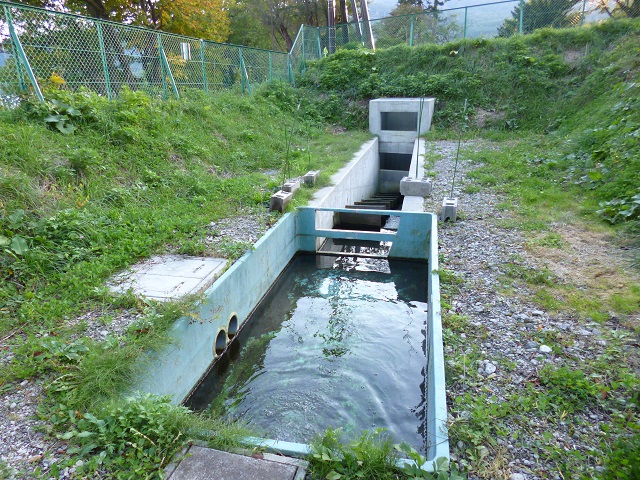
A fishway was completed on March of 2011. The fishway is what is called an artificial river designed as follows. Water current from a rectangular FRP aquarium inside the fish farm flows down along a ditch (its length is about 7.5 m), runs through in a tunnel under a public road, and finally flows down along a ditch into a lakeshore (its length is about 12.5 m). The total length amounts to about 40 m. Also, the difference of elevation between the bottom of the aquarium and the lake surface is about 4 m.
Wooden plates are installed obliquely in V-type ditch of the fishway at intervals of 1 m to hold the sufficient water level. This allows swimming-up fish to take a rest on the way. A small trapezoid is cut away from the top left corner of the wooden plate so that the water depth of overflow become about 0.24 m. Thus, adult salmon fish can swim up the fishway without jump over the wooden plate. Also, this slope has an ascent of 20 cm in 1 m of the ditch (about 11 degrees).
The fishway is also equipped with water pump to pump up lakewater into the aquarium , because a flow volume of springwater in the fish farm may not be abundant (0.684 m³/min). The current runs at a speed of less than one meter per second (0.839 m³/s).
Since we release about 20,000 yearlings of sockeye salmon annually, we expect that many adult salmon fish showing nuptial coloration will swim up the fishway in autumn.
The local environment
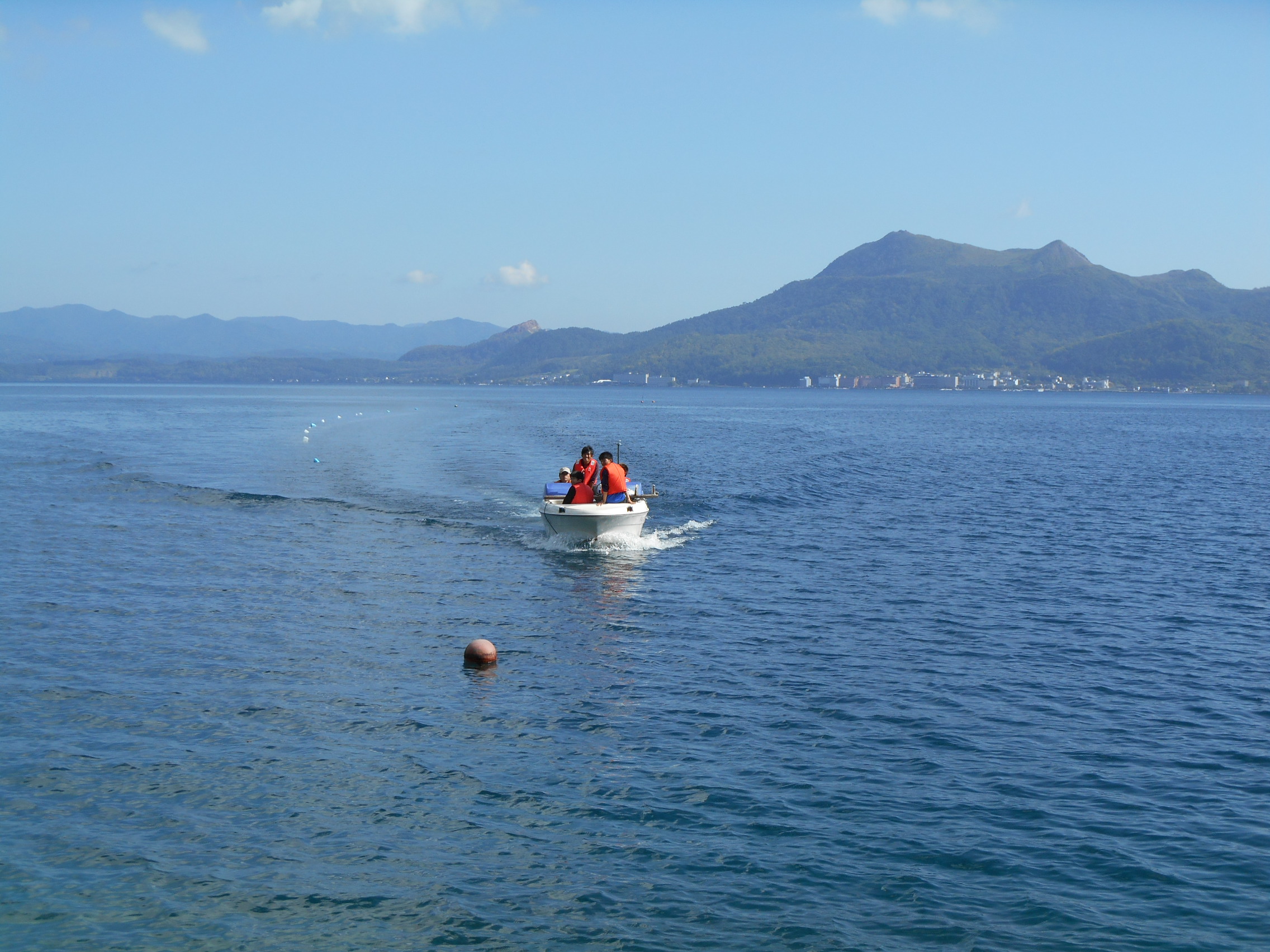
Toya is an oligotrophic lake in Shikotsu-Toya National Park in the southwestern region of Hokkaido, Japan. The lake has a surface area of 70.4 km² , representing the ninth largest lake in Japan. It also has a maximum water depth of 179.7 m, representing the sixth deepest lake in Japan. The lake does not freeze in winter. The lake is well known as a popular tourist spot together with Mt. Usu located near the southern shore. We consider eutrophication may be on the progress in Lake Toya. Mt. Usu is one of the most active volcanoes in Japan. It erupted as many as 4 times during the 20th century. Its most recent eruption was in March 2000.
Lake Toya belongs to the class-B Osaru river system. A hydropower plant was established on the lakeshore in 1937 and used the river water channeled through a tunnel for hydroelectric generation. But, the inflow caused acidification of the lake water because sulfur mine was located upstream of Osaru river. As a result, it greatly affected biota of the lake and then fish was greatly reduced, although the catch of lacustrine sockeye salmon used to be about 40 tons a year on average. After closing the mine and neutralization of the lake water using slaked lime, pH of the lake water became neutral in 1973. However, the catch of lacustrine sockeye salmon has been reduced to a level of less than 1 ton a year recently. Thus, for the purpose of compatibility between the lake environment and the high fishery production, we are doing environmental and biological monitoring, and are studying food web interactions in Lake Toya.
